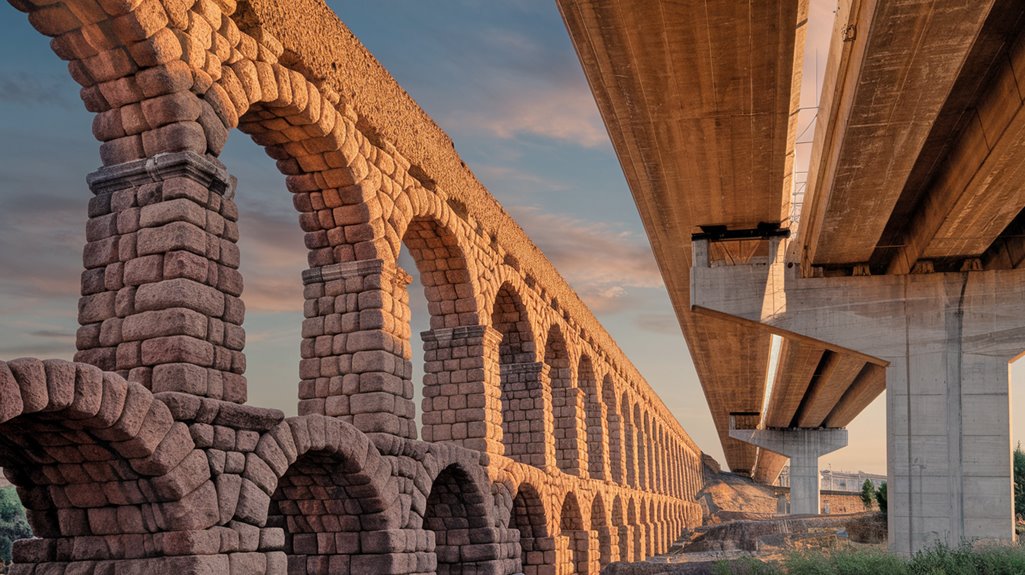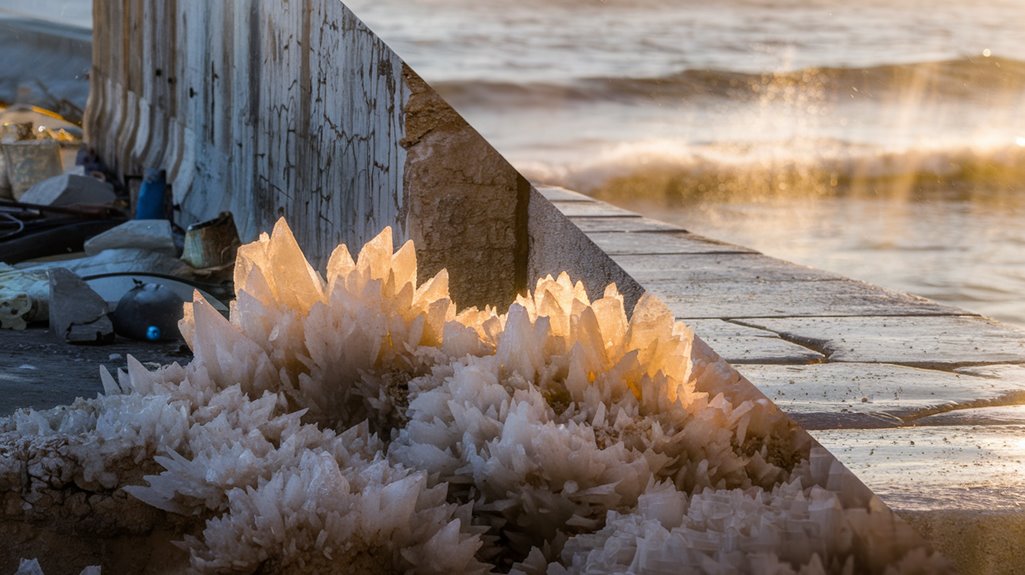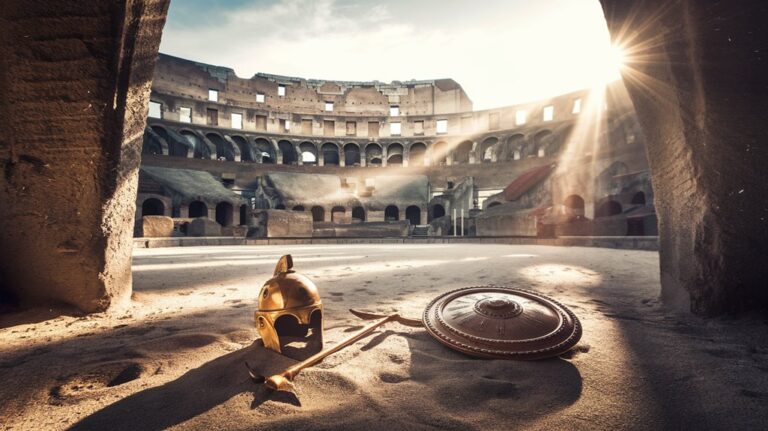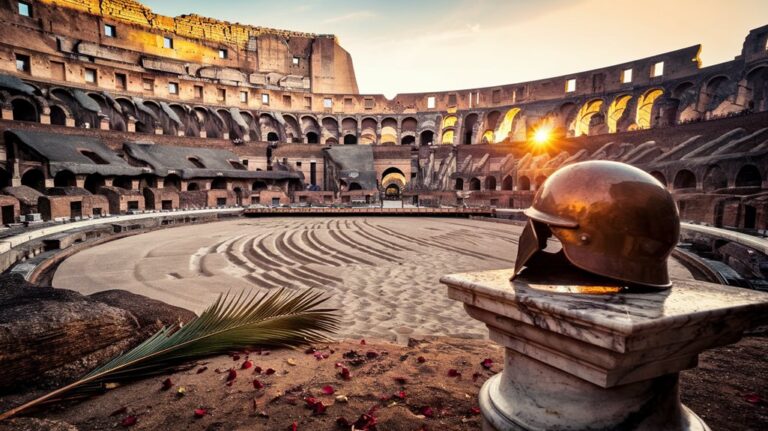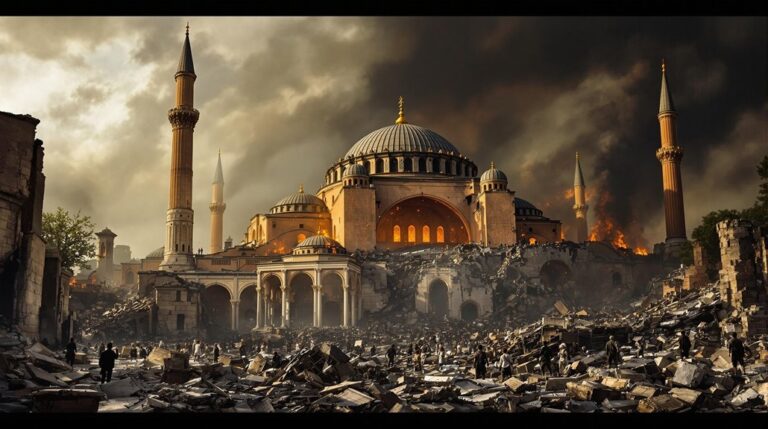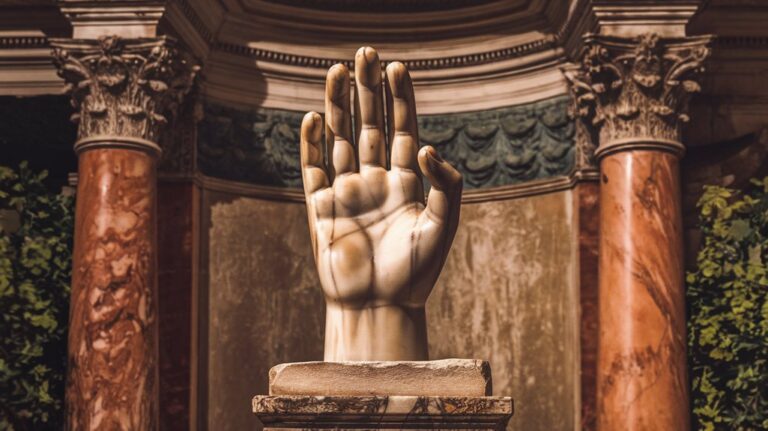Roman Concrete vs. Modern Concrete: Why They Still Win
When you look at the Pantheon's 142-foot concrete dome, you're witnessing something remarkable: a 2,000-year-old structure that's outlasted countless modern buildings. You've probably walked on plenty of cracked sidewalks and seen deteriorating bridges, yet ancient Roman structures continue to stand tall. It's not just luck or superior craftsmanship—it's chemistry. The Romans discovered something in their concrete mixture that modern builders are just beginning to understand, and it could revolutionize how we construct our future.
The Secret Behind 2,000 Years of Standing Strong
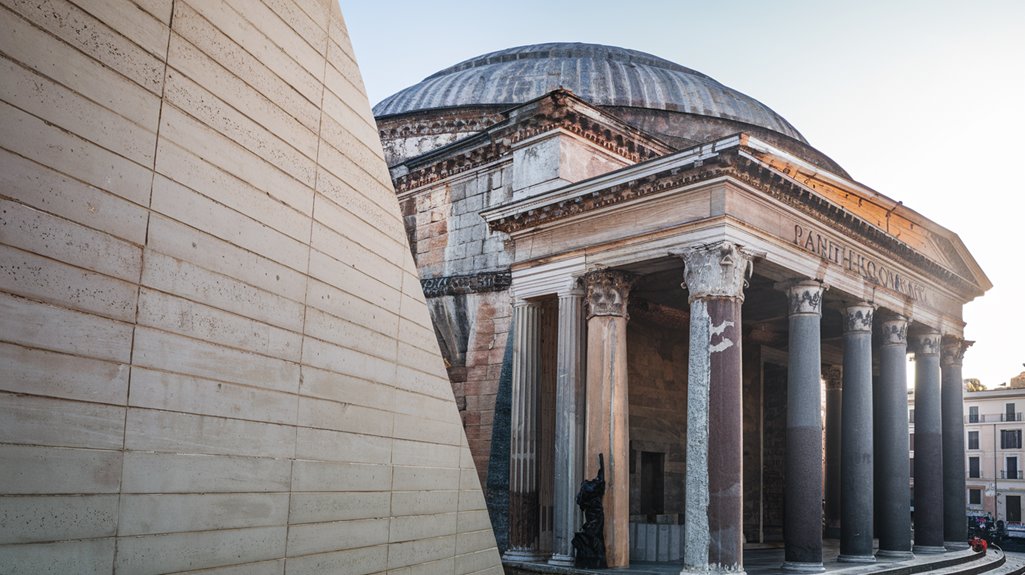
While modern buildings often require frequent repairs and maintenance, ancient Roman structures have defied time thanks to a remarkable concrete formula that continues to fascinate engineers and scientists.
When cracks appear in Roman concrete, they trigger an ingenious self-healing mechanism. Water seeping into these fissures reacts with lime clasts, creating a solid material that automatically fills and repairs the damage. Modern concrete structures face serious issues like sulphate attack that alters their microstructure and leads to cracking.
The secret lies in their unique blend of volcanic ash, quicklime, and volcanic rock. When mixed with seawater, this combination forms rare minerals like aluminous tobermorite and phillipsite, which actually strengthen the concrete over time. Today's engineers are exploring ways to incorporate coal fly ash as a modern substitute for the volcanic materials used by the Romans.
Unlike today's structures that may deteriorate within decades, Roman buildings have stood strong for over 2,000 years, particularly in marine environments where modern concrete typically fails.
Environmental Edge: A Tale of Two Concretes
Despite the remarkable engineering achievements of modern construction, today's concrete industry carries a hefty environmental burden, contributing to 7 percent of global carbon emissions.
You'll find that for every metric tonne of Portland cement produced, an equal amount of CO2 is released into the atmosphere, considerably increasing the industry's carbon footprint.
Modern structures built with this concrete often deteriorate within mere decades, unlike their Roman counterparts.
In contrast, Roman concrete offers valuable lessons in sustainable sourcing and environmental stewardship. Scientists are now developing self-healing concrete inspired by these ancient techniques.
Their ingenious recipe used less lime, lower temperatures, and locally available materials like volcanic ash.
You won't just get a greener alternative – you'll also benefit from concrete that's more durable and self-healing.
Self-Healing Properties That Modern Engineers Dream Of
As scientists uncover the mysteries of Roman concrete, they've discovered a remarkable self-healing capability that sets it apart from modern alternatives.
The secret lies in the ancient materials, specifically quicklime, which creates a unique nanoparticle structure that modern engineers are keen to replicate. Recent studies from MIT show that lime clast technology could revolutionize modern construction methods. The discovery came from analyzing the volcanic ash commonly used by Roman builders.
You'll find these impressive self-healing mechanisms at work when water triggers the dissolution and recrystallization of calcium carbonate, effectively sealing cracks up to 0.5mm wide—nearly twice the size modern concrete can handle.
- Roman concrete uses lime clasts that actively heal damage when exposed to water
- The healing process completes within two weeks of crack formation
- These structures can last millennia, while modern concrete often fails after decades
Scientists are now racing to commercialize this technology, potentially revolutionizing modern construction while reducing global CO2 emissions.
Coastal Construction: Where Romans Got It Right
When it comes to coastal construction, Roman engineers mastered techniques that modern builders still struggle to replicate. Their ancient materials, particularly the mixture of volcanic ash, quicklime, and volcanic rock, created a concrete that actually thrived in saltwater environments. These remarkable structures have remained standing for self-healing properties thanks to their distinctive lime clasts.
You'll find their coastal techniques were remarkably innovative. They'd create underwater structures using methods like the box system, where they'd stake out areas on the ocean floor, or the floating box technique, where they'd build forms onshore and float them into position.
What's most impressive is how their concrete would strengthen over time in seawater, forming rare minerals like tobermorite and phillipsite. These crystals gave the structures flexibility under stress and a unique ability to resist cracking. The iconic Caesarea Maritima harbor demonstrated these innovative concrete techniques during its construction in 9 BCE.
Modern concrete, in contrast, often deteriorates in marine environments within decades.
What Modern Builders Can Learn From Ancient Methods
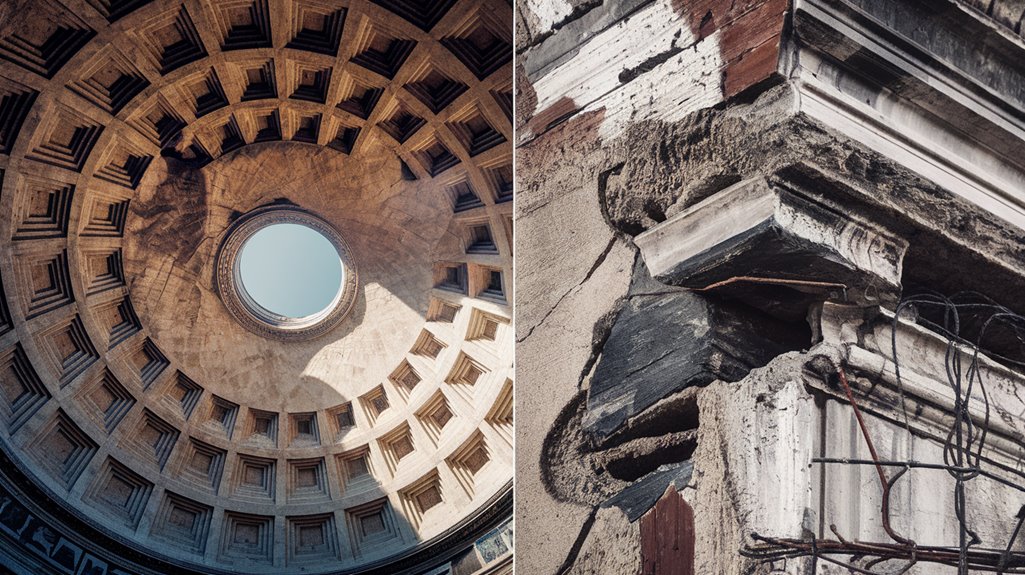
Modern builders seeking to create more sustainable and durable structures can learn valuable lessons from Roman engineering achievements.
By studying ancient techniques, you'll discover that Romans mastered the art of creating self-healing concrete that outperforms today's standards, capable of repairing cracks up to 0.5mm wide.
The key insights from Roman concrete technology include:
- Using sustainable materials like volcanic ash and quicklime for enhanced durability
- Employing "hot mixing" processes that improve strength and reduce curing times
- Leveraging natural chemical reactions that allow structures to interact with their environment
The Romans achieved remarkable durability by using a precise 2:1 pozzolan ratio in their highest-quality structural applications.
You can apply these principles to develop better construction methods today.
The Romans' use of standardized components and uniform concrete formulas demonstrates that ancient wisdom can guide modern innovation toward more resilient and environmentally friendly building practices.
The Future of Construction: Blending Old With New
While the construction industry faces mounting environmental challenges, combining Roman engineering principles with contemporary building technologies offers promising solutions for sustainable development.
You'll find that integrating ancient materials with construction innovation can greatly reduce carbon emissions while improving structural longevity. The use of volcanic ash mixtures demonstrates how ancient ingredients can create structures that endure for centuries. The incorporation of recycled materials in modern concrete mixes furthers sustainability goals while maintaining structural integrity. By adopting Roman concrete's sea-resistant properties and blending them with modern green building techniques, you're able to create more durable coastal structures that strengthen over time.
You can enhance sustainability by incorporating locally sourced materials and natural ingredients, similar to Roman methods, while maintaining modern performance standards.
Though scaling up production and recreating exact Roman formulas remain challenging, you'll discover that this hybrid approach offers the best of both worlds: the durability of ancient techniques with the efficiency of contemporary construction practices.

